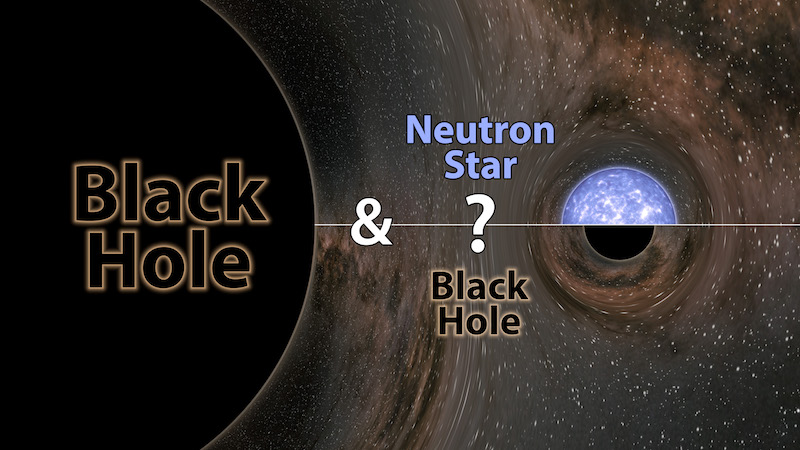23 Jun 2020 — When the most massive stars die, they collapse under their own gravity and leave behind black holes; when stars that are a bit less massive die, they explode in supernovas and leave behind dense, dead remnants of stars called neutron stars. For decades, astronomers have been puzzled by a gap that lies between neutron stars and black holes: the heaviest known neutron star is no more than 2.5 times the mass of our sun, or 2.5 solar masses, and the lightest known black hole is about 5 solar masses. Now, scientists from LIGO and Virgo have announced the discovery of an object of 2.6 solar masses, placing it firmly in the mass gap. The object was found on August 14, 2019, as it merged with a black hole of 23 solar masses, generating gravitational waves that were detected by the LIGO and Virgo detectors.
For more details, read the full press release and see the GW190814 detection page.

